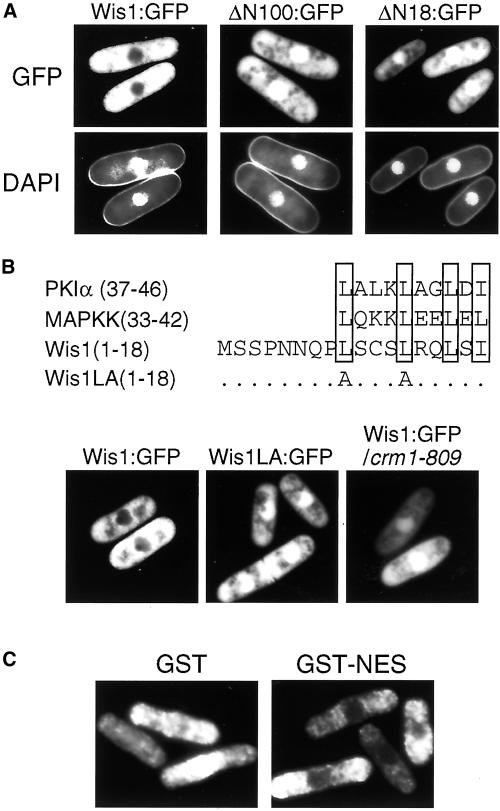Figure 5.
Cytoplasmic localization of Wis1 MAPKK is dependent on a NES sequence at its N terminus. (A) Δwis1 cells (CA894) were transformed with pREP41-wis1:GFP, pREP41-wis1ΔN100:GFP, or pREP41-wis1ΔN18:GFP to express Wis1-GFP, ΔN100-GFP, or ΔN18:GFP, respectively, from the thiamine-repressible nmt41 promoter. The transformants were grown at 30°C for 16 h in EMM2 without thiamine and visualized directly with fluorescence microscopy after 4,6-diamidino-2-phenylindole staining. (B) Nuclear exclusion of Wis1 requires its NES sequence and the exportin Crm1. A leucine-rich region in the N terminus of Wis1 shows similarity to NES sequences found in PKIα and Xenopus MAPKK. In the wis1LA allele, the first two leucine residues were substituted with alanine. Δwis1 cells (CA894) were transformed with pREP41-wis1:GFP or pREP41-wis1LA:GFP plasmids, whereas crm1-809 mutant cells (CA1068) were transformed with pREP41-wis1:GFP plasmid. The transformants were observed as in A. (C) NES sequence found in Wis1 (residues 7–20) was fused to GST to construct the pREP1-GST:NES plasmid. Together with pREP1-GST, this plasmid was used to transform the wild-type S. pombe strain (PR109). The transformants were grown as in A and subjected to immunofluorescence microscopy by anti-GST antibodies.

